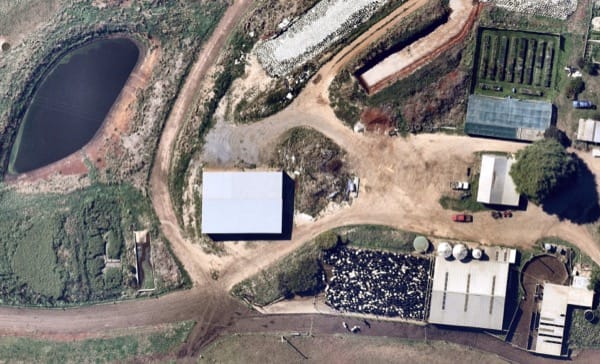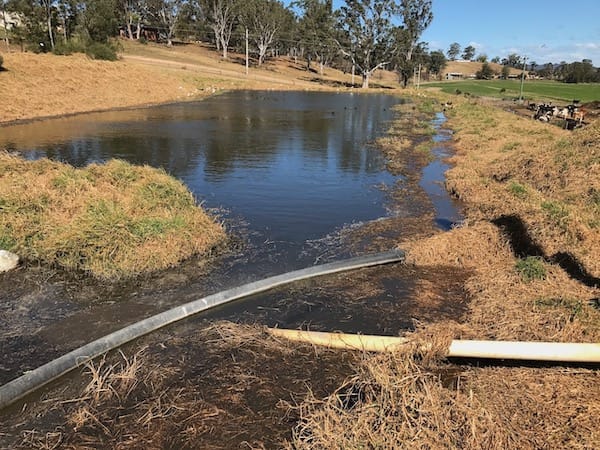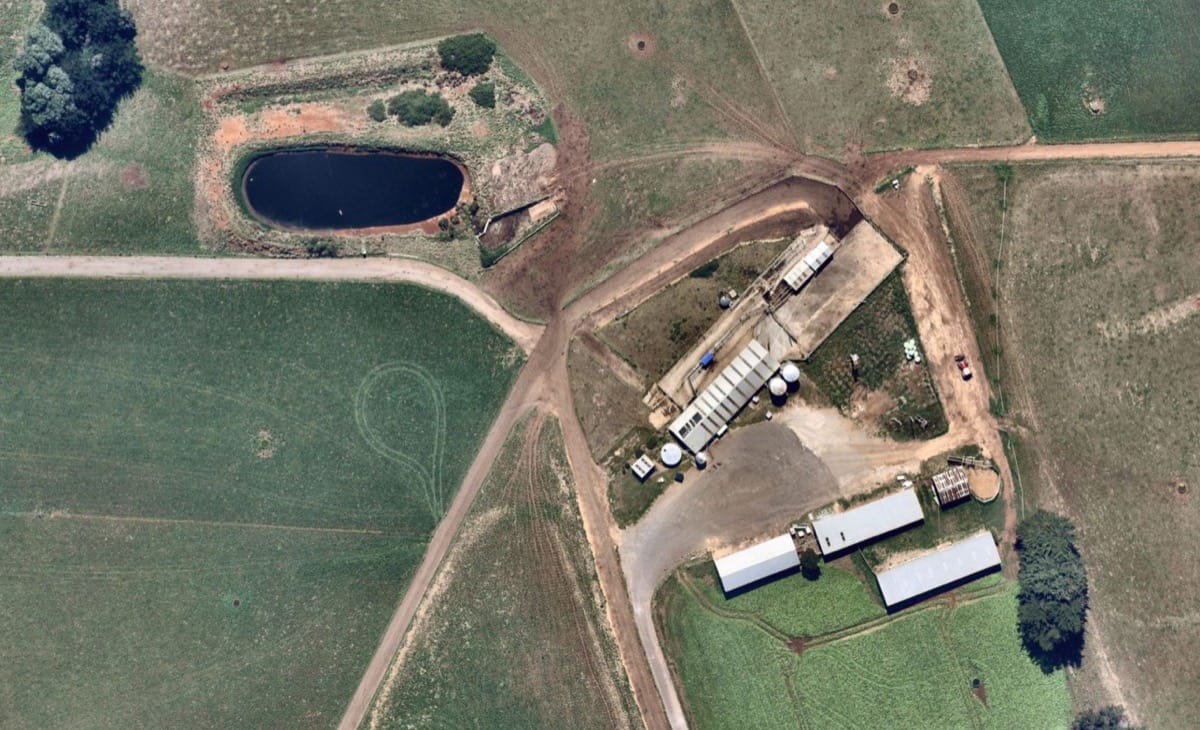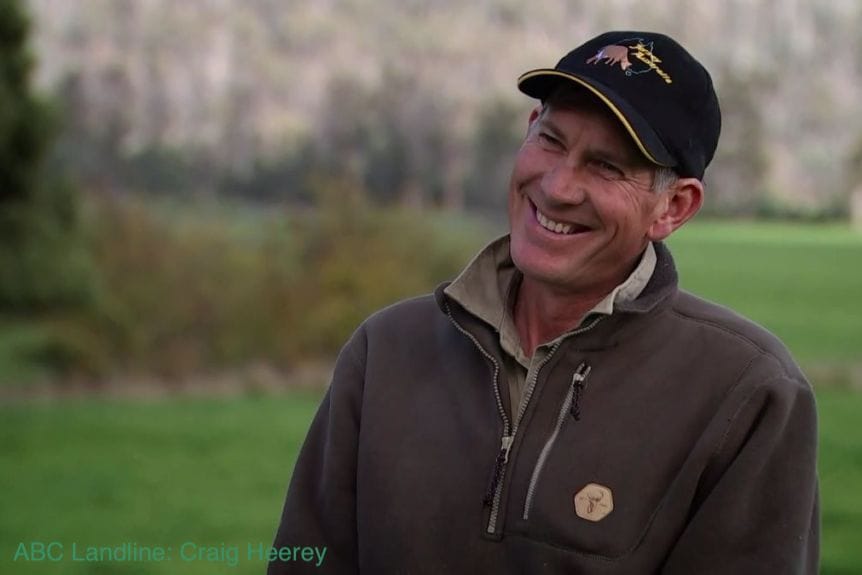While discussing livestock farming, often effluents get left behind.
In this article, let’s look at the science behind effluents, the challenges and opportunities it presents, and what a dairy farmer is doing to solve the problem of effluents entering the Tamar estuary in northern Tasmania. Finally, we’ll also see what you can do to manage your effluents more effectively.
Understanding Effluents
Let me start by saying something blatantly obvious. Through the day, your animal’s poo and pee a lot.
Large animals such as beef cattle and dairy cows on average can produce around 50 litres of effluent, every day. In some cases, animals can even produce up to 100 litres of effluents in a day.
So, in addition to thinking about producing milk, meat and other animal products, you also have to manage effluents. Otherwise, it can create harmful natural, biological, chemical and social effects.

Effluents from a livestock farm have a lot of nutrients in them. On average, a litre of effluent from a dairy farm has about 167g of Nitrogen, 36g of Phosphorus and 274g of Potassium. Now multiply this by 50 and then multiply that result by the number of animals on your farm. This quickly adds up to a lot of nutrients on a daily basis.
But nutrients are called nutrients because it can improve yields of plants and crops. And for a progressive livestock farmer like you, this means improving your pasture yields.
In theory, when you remove a ton of dry matter from your improved legume-grass pasture, you remove about a kilo of Phosphorus and five kilos of Potassium per acre per year. Actual values will vary based on the kind of pasture variety and your soil profile, but this is a good ballpark.
So there is an opportunity to use most of your effluent back on your pasture, to improve yields and farm productivity. However, there are also several challenges and barriers in the real world that prevent this from happening.
We’ll look at this in a bit, for now, let's look at where the effluents end up. And understand what problems they cause.
How Effluents End Up In Water & Causes Eutrophication
In addition to nutrients, effluents also contain pathogens.
To ensure that animals don’t get infected by diseases from these effluents pathogens, farmers wash it away from the animal sheds and store it in a collection pond.
The effluents can sit, ferment and breakdown in these collection ponds for several months. And during heavy rainfall or storm events, this can overflow into the local streams, creeks or rivulets. In turn, they flow into bigger lakes and rivers, before ultimately ending up in our oceans.
In other instances, livestock may have direct access to freshwater streams, ponds or lakes. This means that their urine and feces can directly fall in or near the body of water.
Either way directly or indirectly, livestock effluents end up in water bodies if they aren't managed well. And this is a big problem because it puts a massive strain on fragile aquatic ecosystems.

Like any ecosystem, freshwater ponds, lakes and rivers have many organisms living in them. Organisms like bacteria, algae, planktons and a variety of fishes – all living in balance with each other. When nutrient-rich effluent or fertilizer runoff enters such an ecosystem, two things happen.
One, the excess Nitrogen and Phosphorus favours the growth of algae and other plants. So a lot of them take over niches that were previously occupied by other more complex organisms such as fish.
And two, as these plants die, while decomposing they’ll use up a lot of dissolved oxygen. In turn, creating low oxygen conditions that further reduce the population of complex organisms like fish. This is called eutrophication.
After repeated eutrophication cycles, the once clean and clear water bodies that were full of fish turn into greenish algae-filled nutrient-rich water bodies that have no fish. But this is not about fish. Fish is just an indicator of a healthy aquatic ecosystem.
Water that is not purified by a healthy ecosystem is a health hazard for humans and animals. It is also an even greater social and environmental hazard. Ultimately, eutrophication even creates dead zones in oceans.
But things needn’t be this way. And we have better alternatives to contain and reuse effluents.
Containing & Reusing Effluents
As discussed earlier, your effluents have a lot of nutrients that can significantly increase your pasture yields.
However, there are a few practical limitations that prevent optimal reuse of effluents in reality.
For most farmers, it is impractical to reuse effluents daily, because this can cost a lot of time, effort and money. So depending on their soil profile, usage needs and daily effluent volume, they either use a single or a two pond system to contain effluents.

From here, after the solids have settled down, the liquid part is either pumped or gravity fed to various paddocks. However, matching nutrient application to soil requirements is challenging on two fronts.
First, effluent nutrient values change according to the season and age of the effluent. So it's hard to accurately know how much nutrients are present at any given time. And secondly, according to what species you grow and its growth stage, your pasture will need nutrients in different quantities.
But it is important to match the nutrient application with soil needs because the use of effluents on your pasture is beneficial only up to a certain point. Beyond that, it can cause serious long-term problems such as potassium overload or nitrate leaching.
So, only a mix of trial and error along with frequent soil testing over time can tell you how much effluent you can safely reuse on your paddocks. More often than not, farmers apply lesser quantities to be safe.
Then there’s seasonality. For instance, you may not have sufficient water during a dry summer to adequately dilute your effluents before applying them to paddocks. Or because you want to prevent effluent runoff, you can’t apply effluents during rainy seasons.
And in some cases, you may not be able to use effluents on all your paddocks in a cost-effective manner.
These factors may further limit how much effluent you can use on your land. This might mean that you may have to construct a bigger effluent storage pond, capable of storing more than 150 days of effluents. This can significantly increase costs, amount of land needed and maintenance effort.
And finally, containing and reusing effluents costs you time, effort, labour and money. Additionally, it may also cost you equipment, machinery, pumps and earthworks. But even these investments may not always be enough.
To ensure that your animals don’t contaminate water bodies directly, you need to fence your property along all streams, rivers and lakes in your property. And to ensure zero effluent runoff, you need to have vegetation and riparian buffer zones along these fence lines.
But these can cost you a lot and may not give you any immediate returns.
So why even do this?
Ken the Tasmanian Dairy Farmer
Ken Lawrence is your typical third-generation Australian dairy farmer, milking around 1,000 cows on a 236-hectare farm near Launceston in Northern Tasmania.
Except that he has completely fenced access to a rivulet that runs across his property.
In addition to this fencing, he has also pro-actively managed weeds as well as supported the growth of native bushes and trees on the area between the fence and rivulet. The fence and the vegetation make sure that no effluent enters the rivulet.
When asked about why he fenced his property, he says “I don’t want to see a river of green cow manure running down into the creek here in Tasmania”.
Ken also has many trees and native bushes in shelterbelts across his farm. But he is no environmentalist. On the contrary, his farm Fermer Dairy produces around 400,000 kilograms of milk solids every year, and each cow on average produces upwards of 450 kilograms milk solids per year.
Two factors help him achieve such a high level of productivity. First, his pasture makes up most of his cows diet. And second, he irrigates up to 90% of his pasture paddocks with effluents and farm storage.

Ken shows us that it is possible for farmers to take care of our collective natural resources. And more importantly, do so without losing out on productivity or profits. He is a bright spot for all farmers.
We are proud to have a progressive farmer like Ken use Pasture.io to measure and manage pastures at Fermer Dairy. Like Ken, many other progressive livestock farmers also use pasture.io to measure and manage their pastures. And by doing so, earn better profits from increased productivity gains. You can read the original article here at ABC.
Soon, we hope that they too will adopt the same land care and productivity standards.
That brings us to the end of this piece. I trust that it was useful.
If you have any questions about effluent re-use or increasing productivity and profits in your livestock farm, ask them as a comment below. I promise to answer your question.
Happy Farming!
- The Dedicated Team of Pasture.io, 2020-09-11